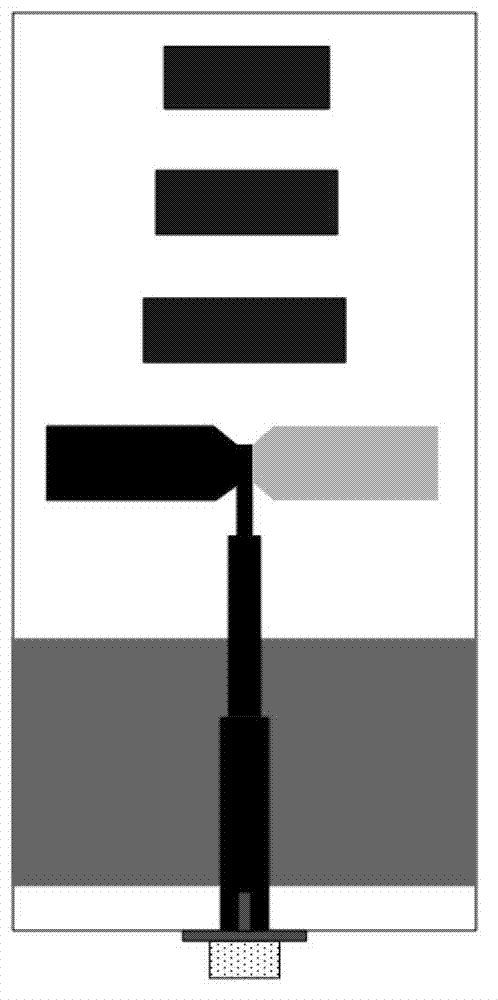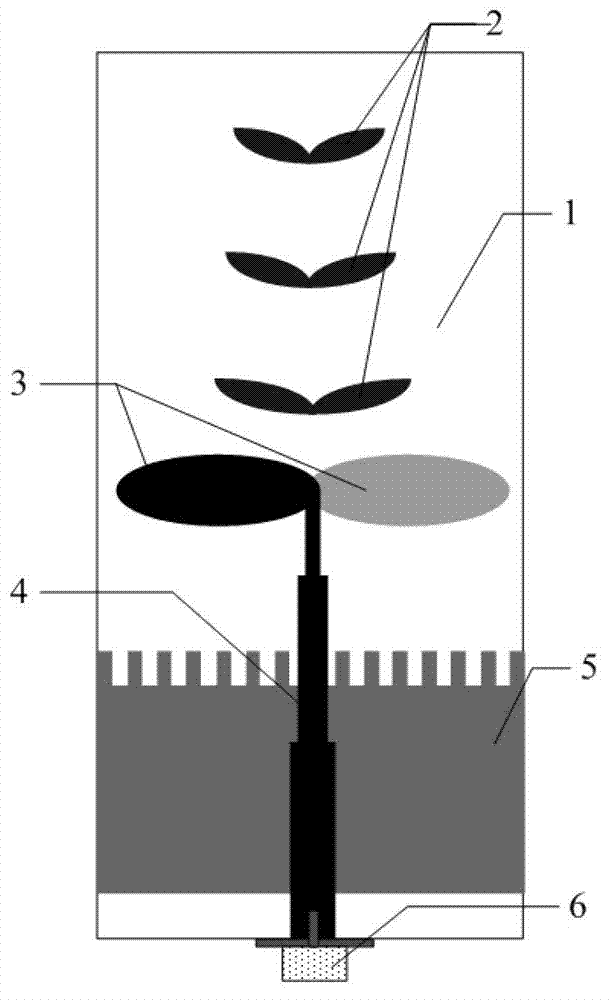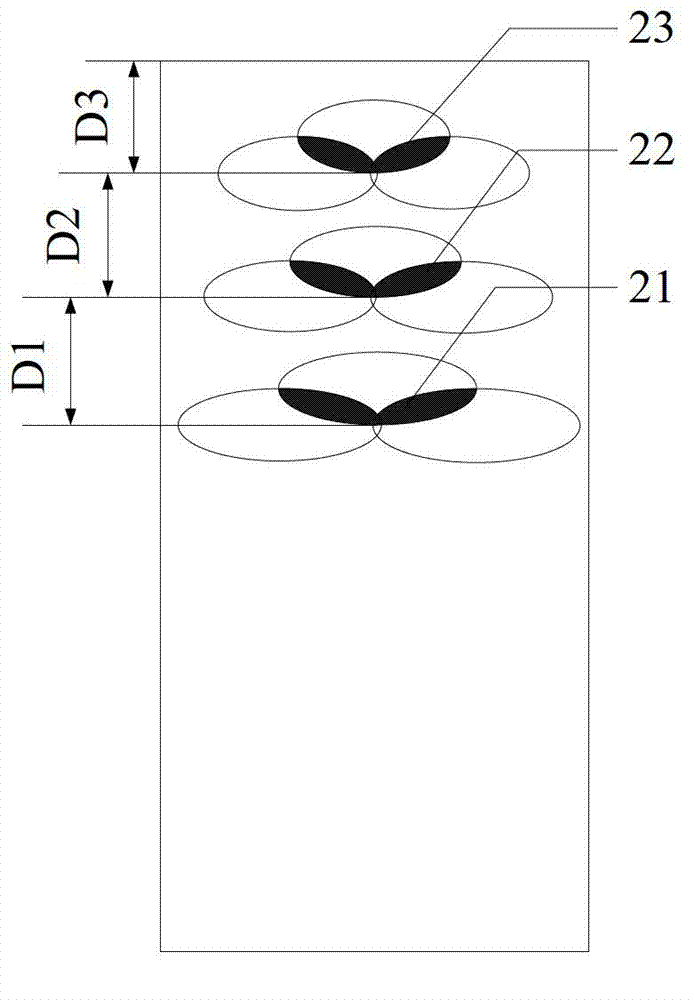Broadband bionic yagi antenna with low radar cross section
A radar cross-section and Yagi antenna technology, applied in the field of bionic antennas, can solve the problems of unfavorable antenna stealth and increased radar cross-section, and achieve the effects of easy stealth, low radar cross-section, and broadband characteristics
- Summary
- Abstract
- Description
- Claims
- Application Information
AI Technical Summary
Problems solved by technology
Method used
Image
Examples
Embodiment Construction
[0030] refer to figure 2 , the present invention is mainly composed of a double-layer dielectric material plate 1, three directors 2, two radiation units 3, parallel strip lines 4, a reflector 5 and a coaxial conversion joint 6. Three directors 2 are printed on the topmost layer of the double-layer dielectric material board 1, two radiation units 3 are printed on the topmost layer and the bottommost layer of the double-layer dielectric material board 1, and the reflector 5 is printed on the double-layer dielectric material board 1. Between the two layers of the material plate 1. The two radiation units 3 are respectively welded to the inner core and the outer core of the coaxial conversion joint 6 through parallel strip lines 4 . The structures of the three directors 2 are as follows: image 3 As shown, the structure of the two radiating units 3 and the parallel strip line 4 is as follows Figure 4 As shown, the structure of the reflector 5 is as Figure 5 shown.
[0031...
PUM
 Login to View More
Login to View More Abstract
Description
Claims
Application Information
 Login to View More
Login to View More - R&D
- Intellectual Property
- Life Sciences
- Materials
- Tech Scout
- Unparalleled Data Quality
- Higher Quality Content
- 60% Fewer Hallucinations
Browse by: Latest US Patents, China's latest patents, Technical Efficacy Thesaurus, Application Domain, Technology Topic, Popular Technical Reports.
© 2025 PatSnap. All rights reserved.Legal|Privacy policy|Modern Slavery Act Transparency Statement|Sitemap|About US| Contact US: help@patsnap.com



